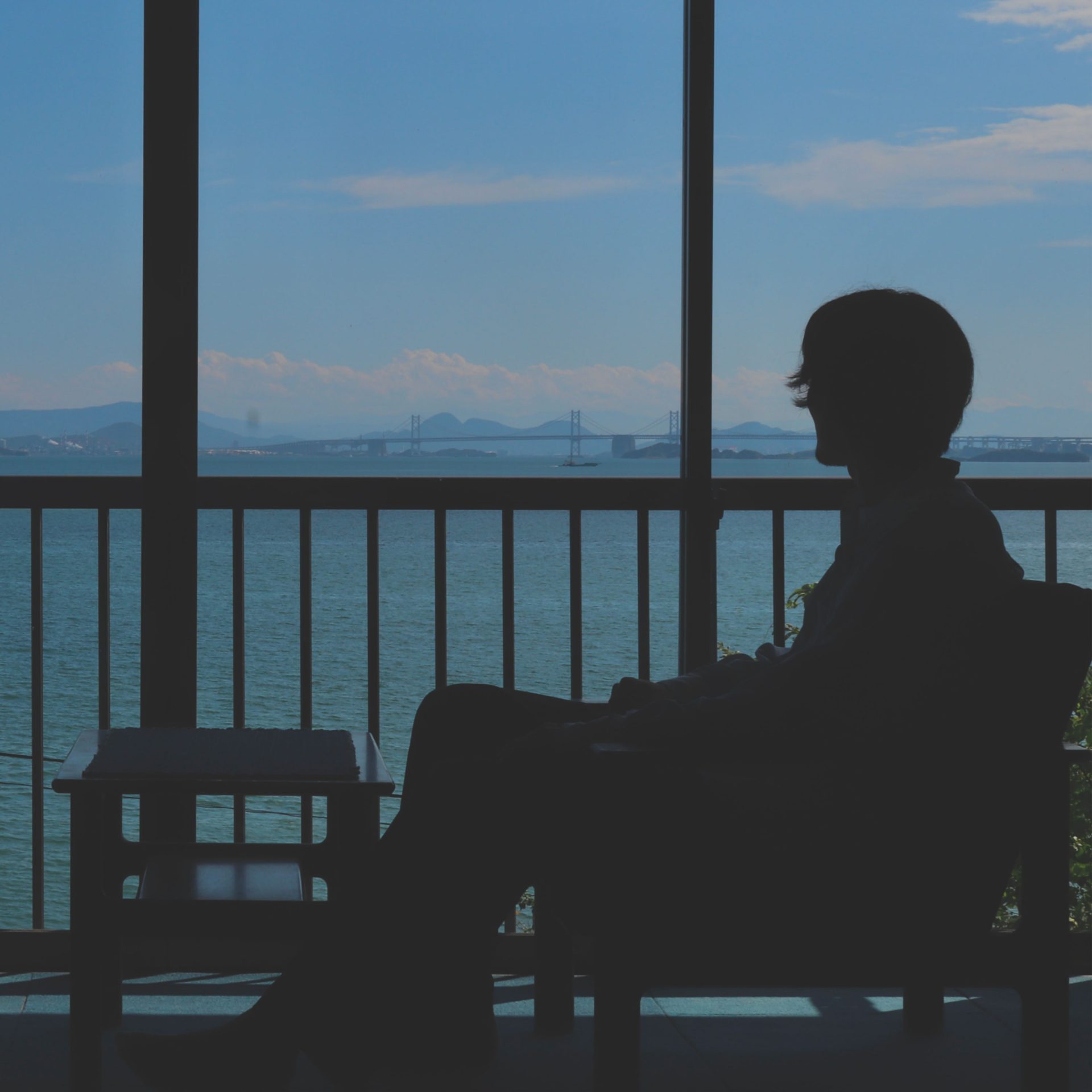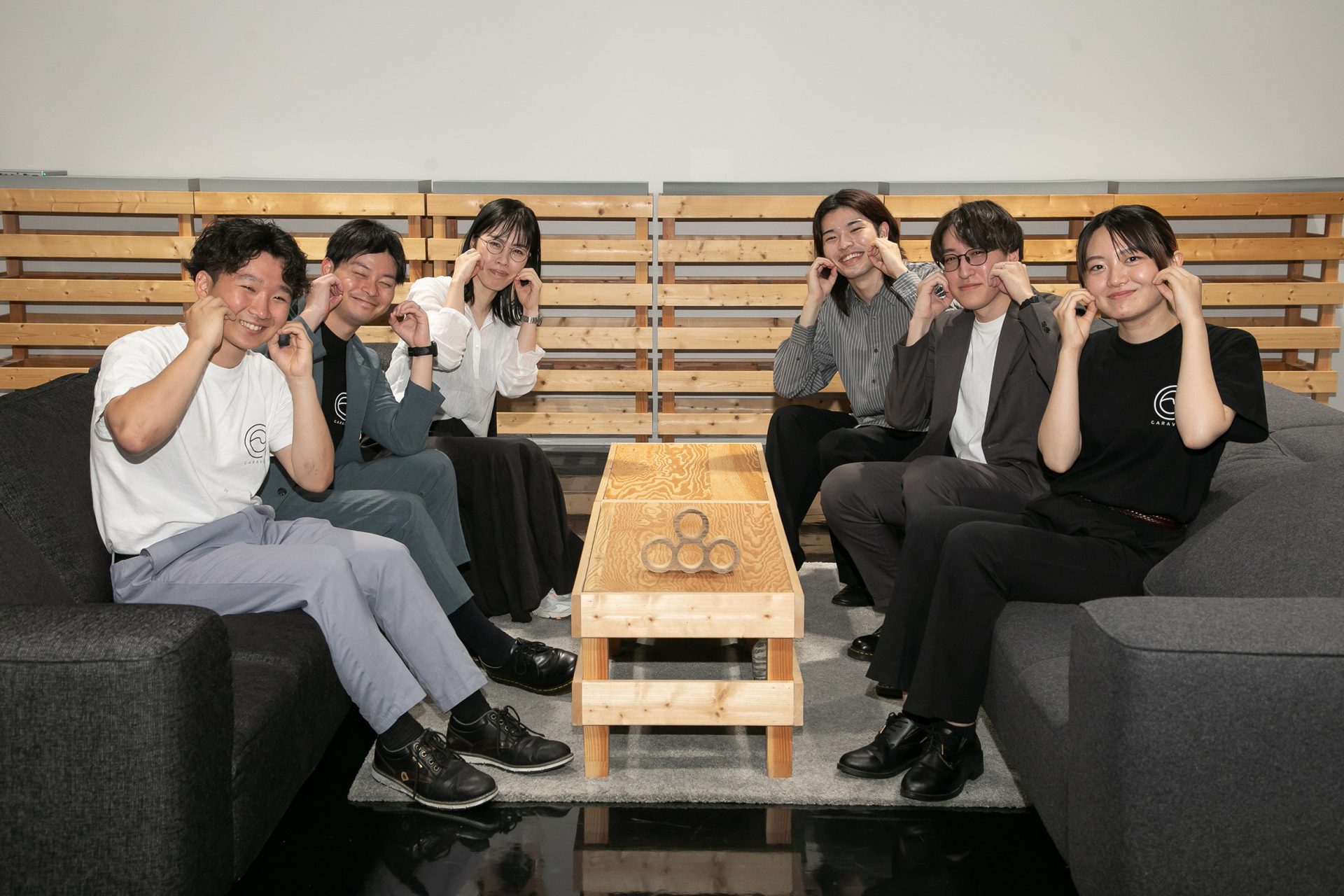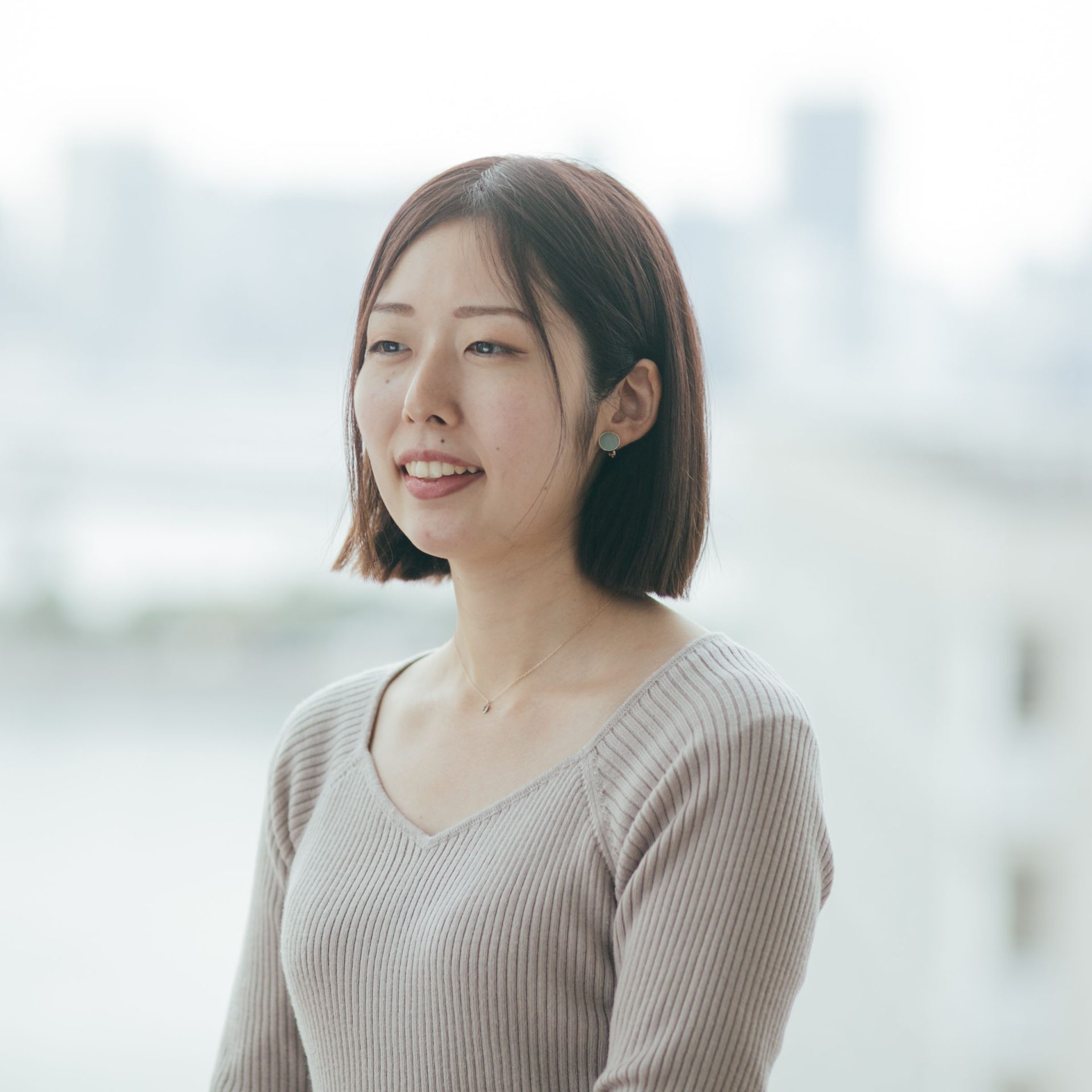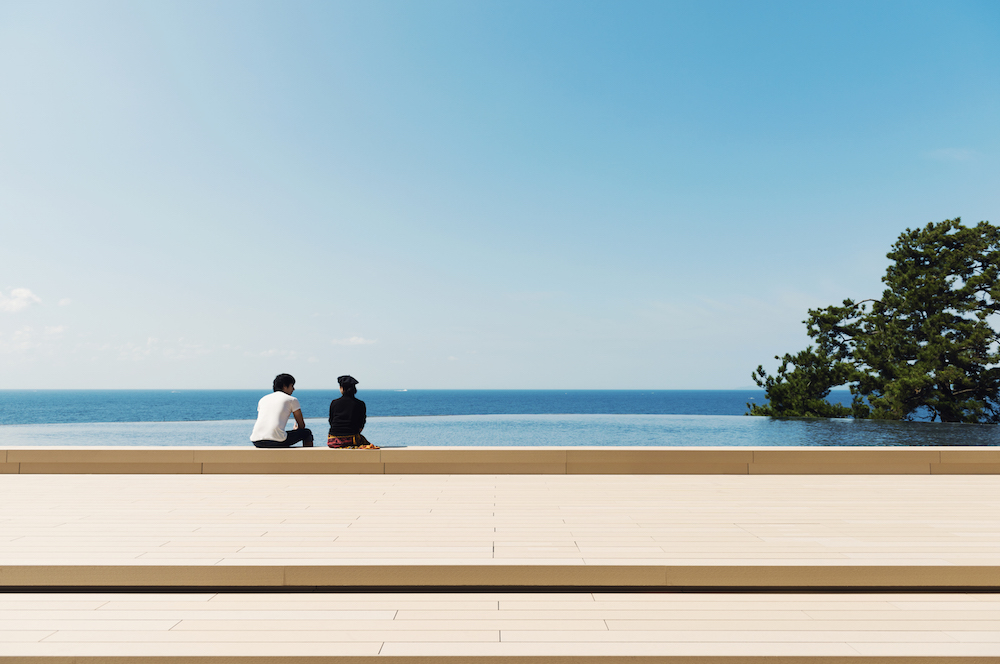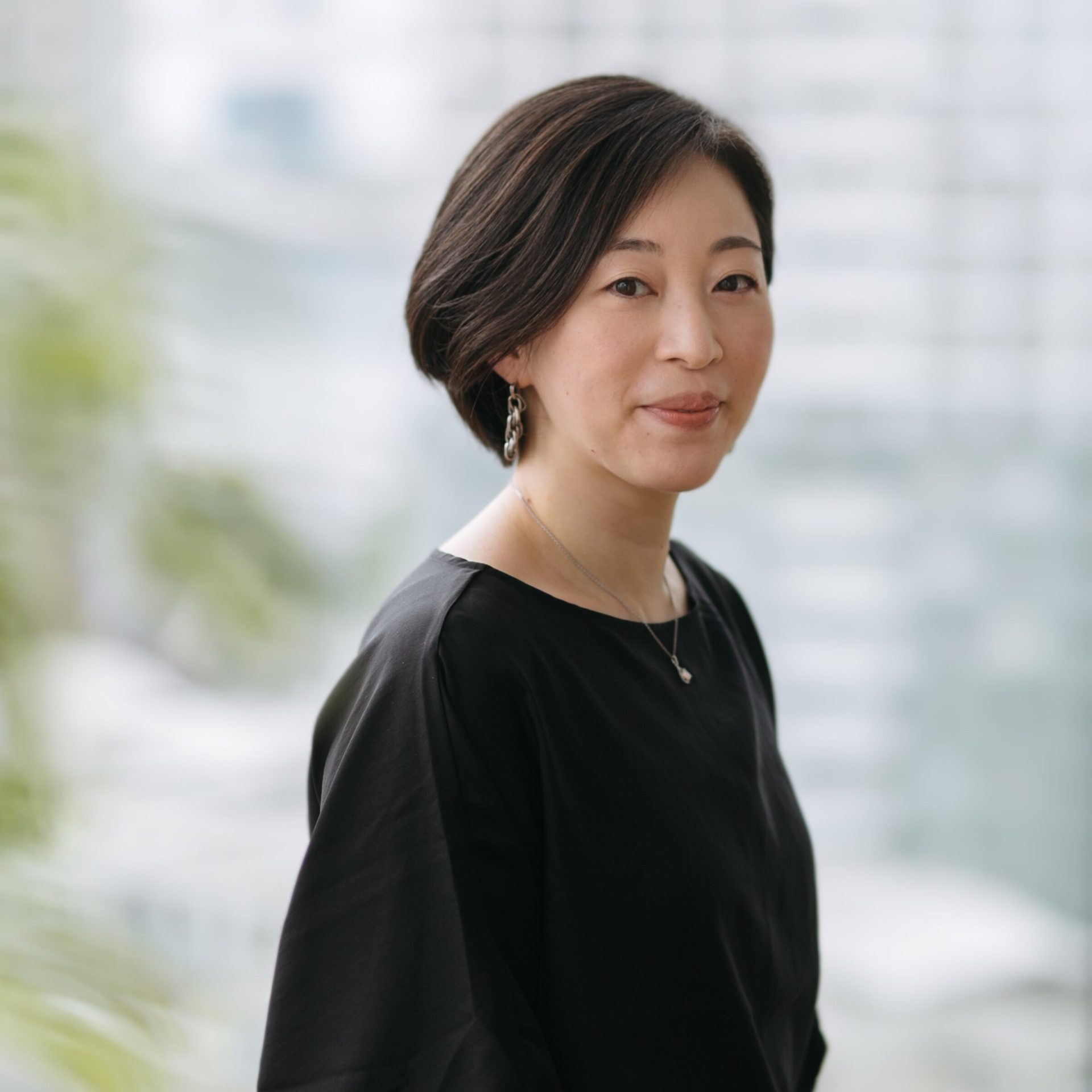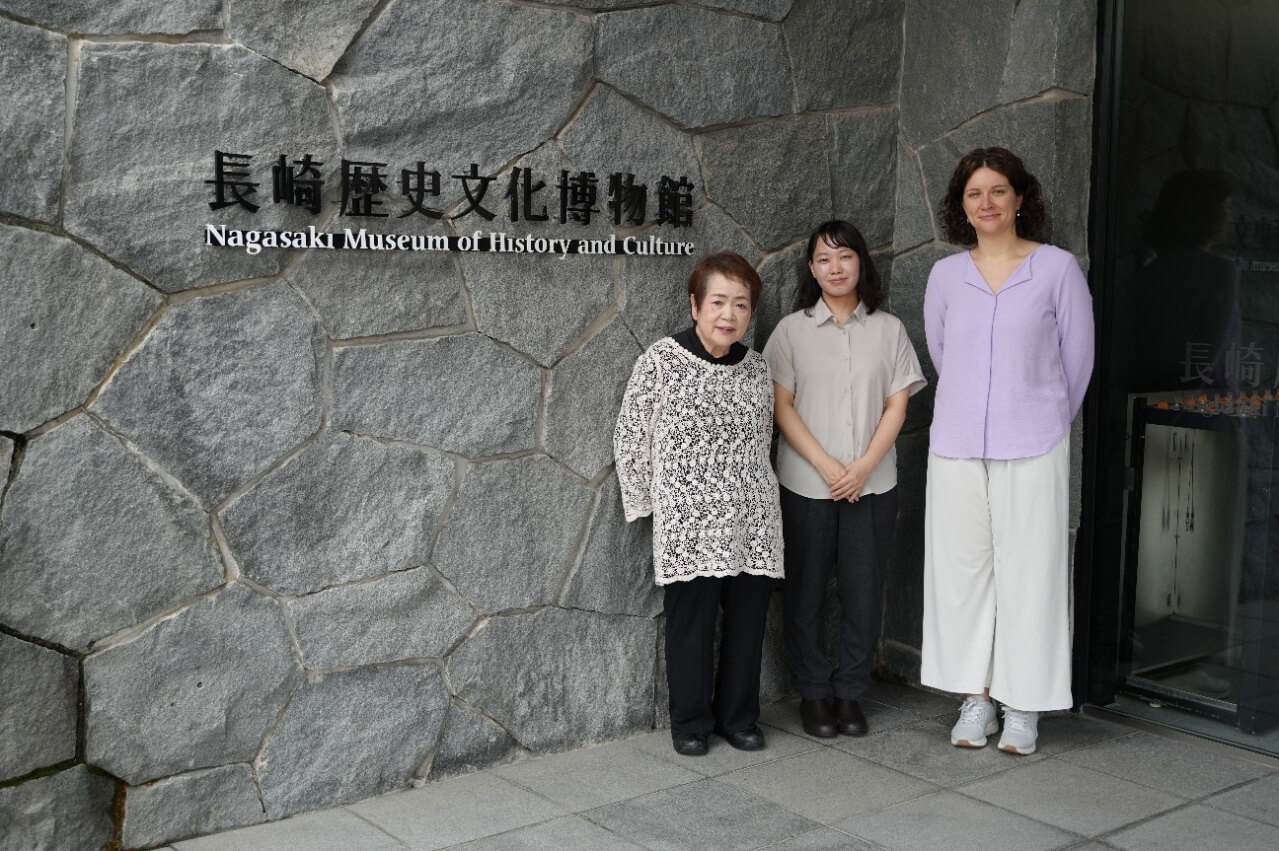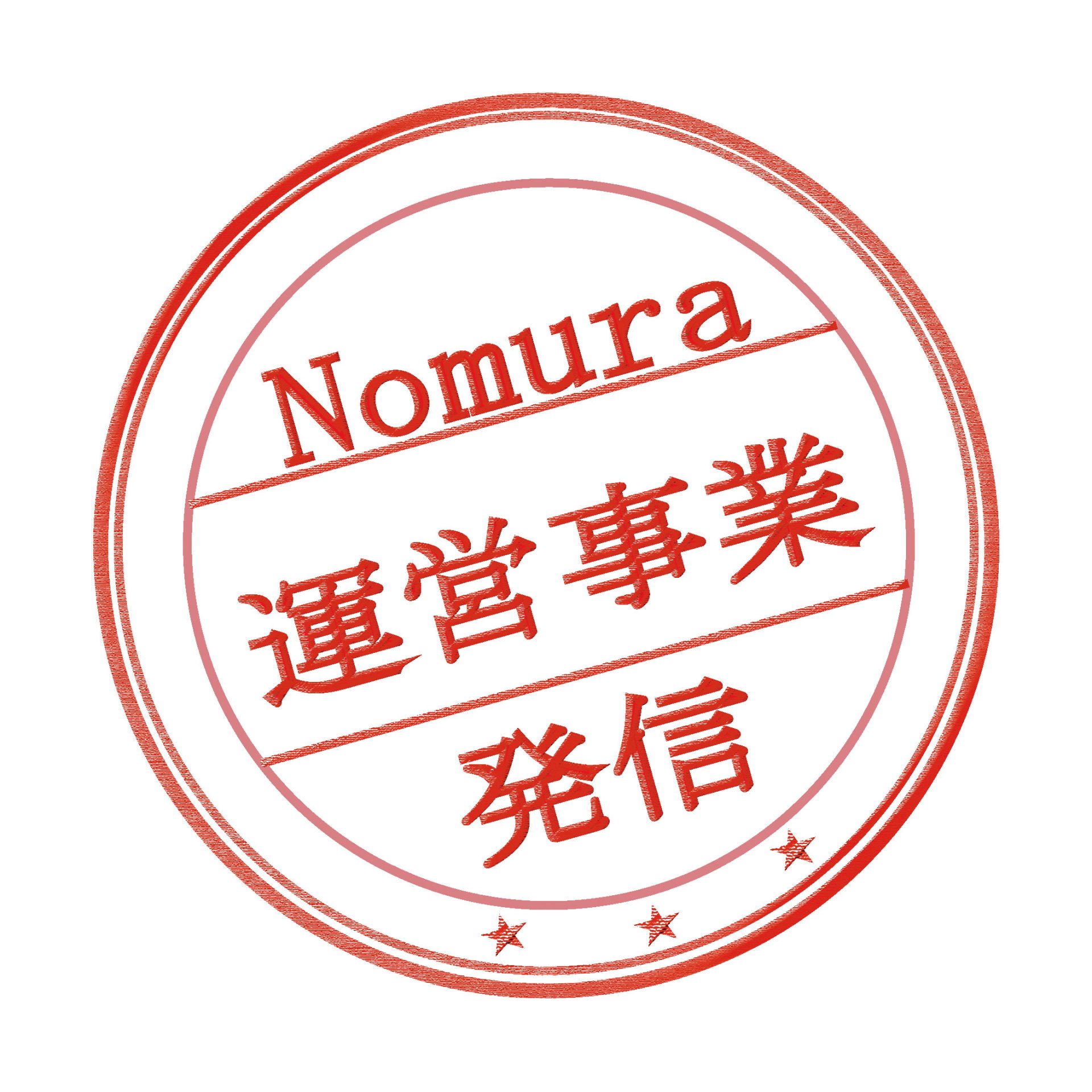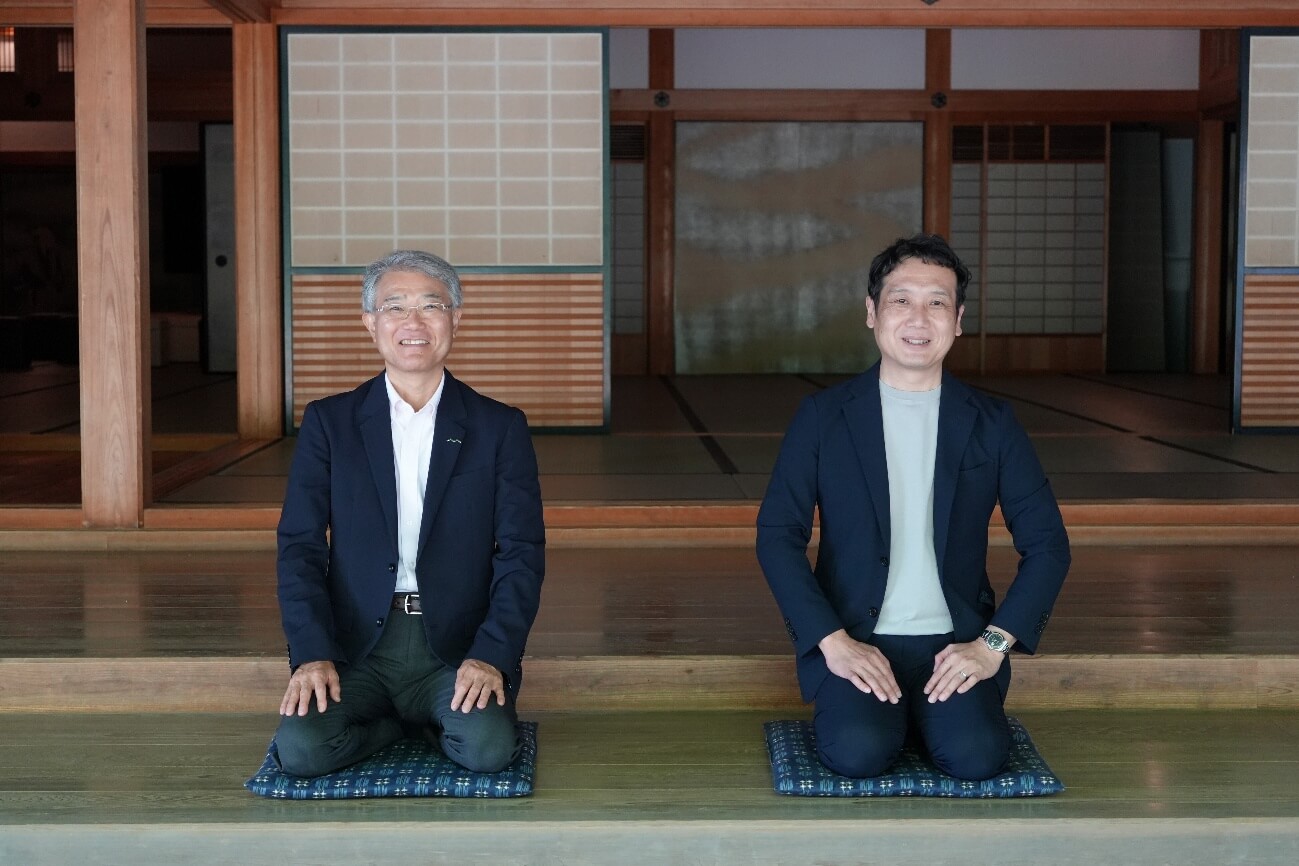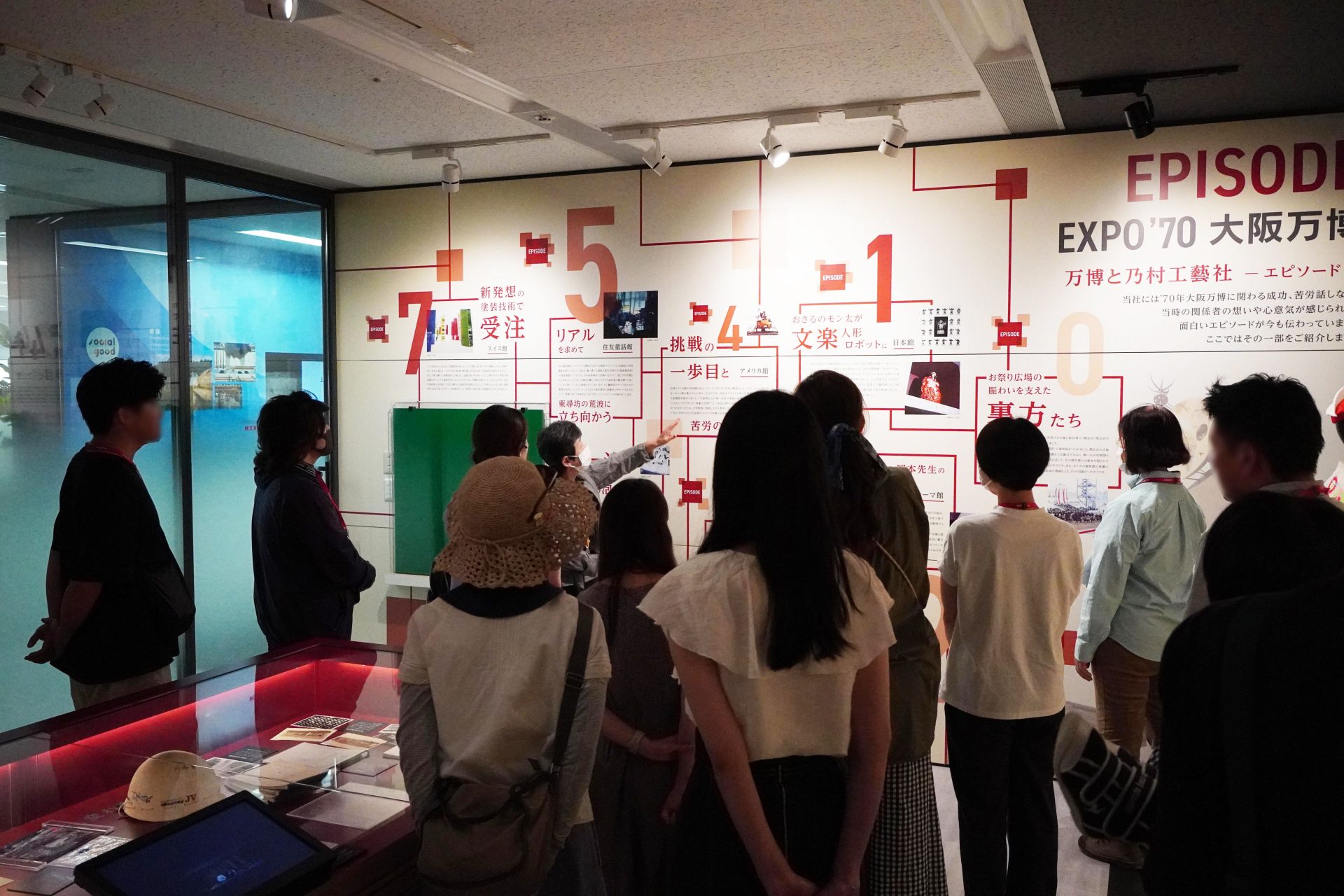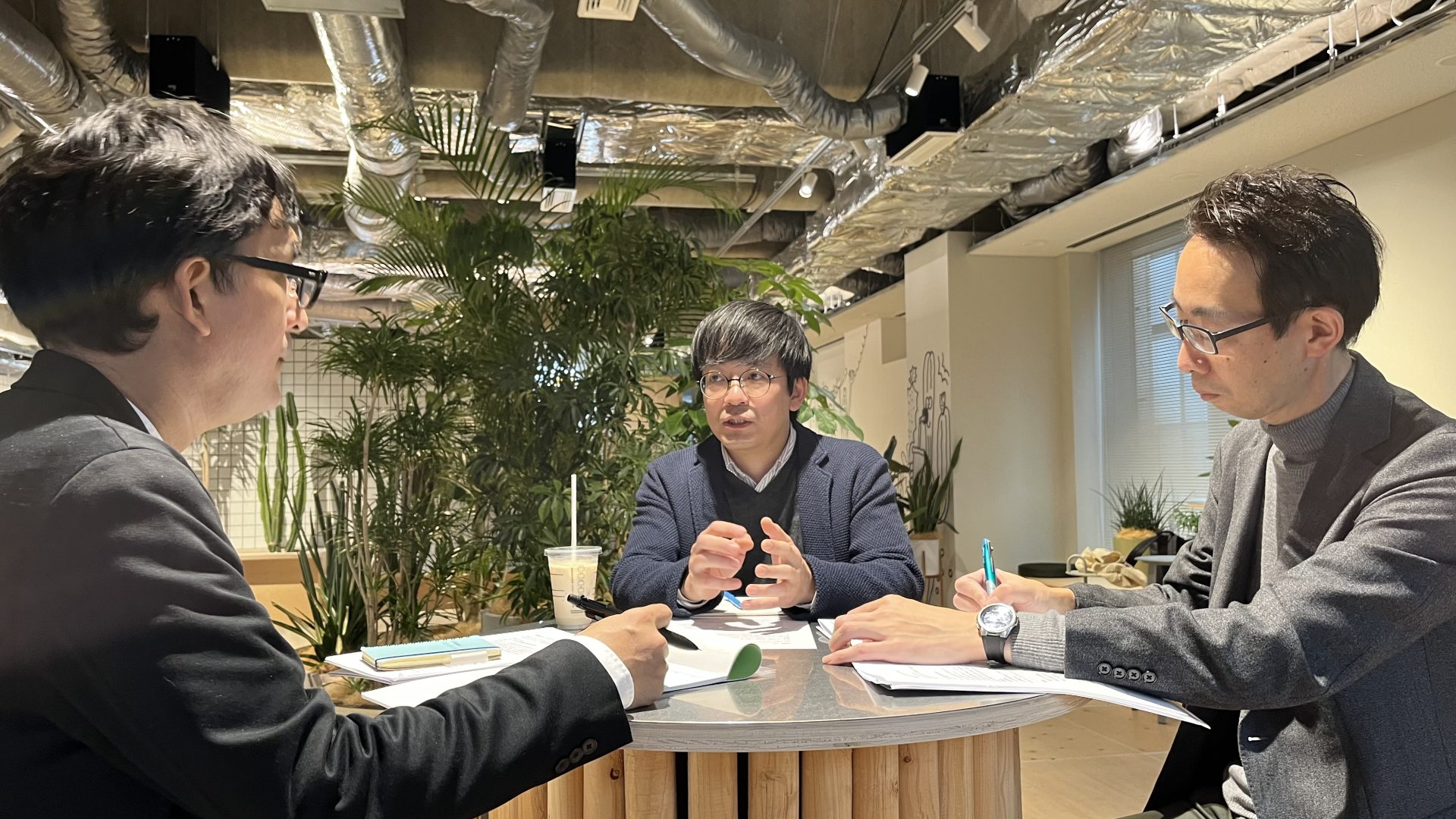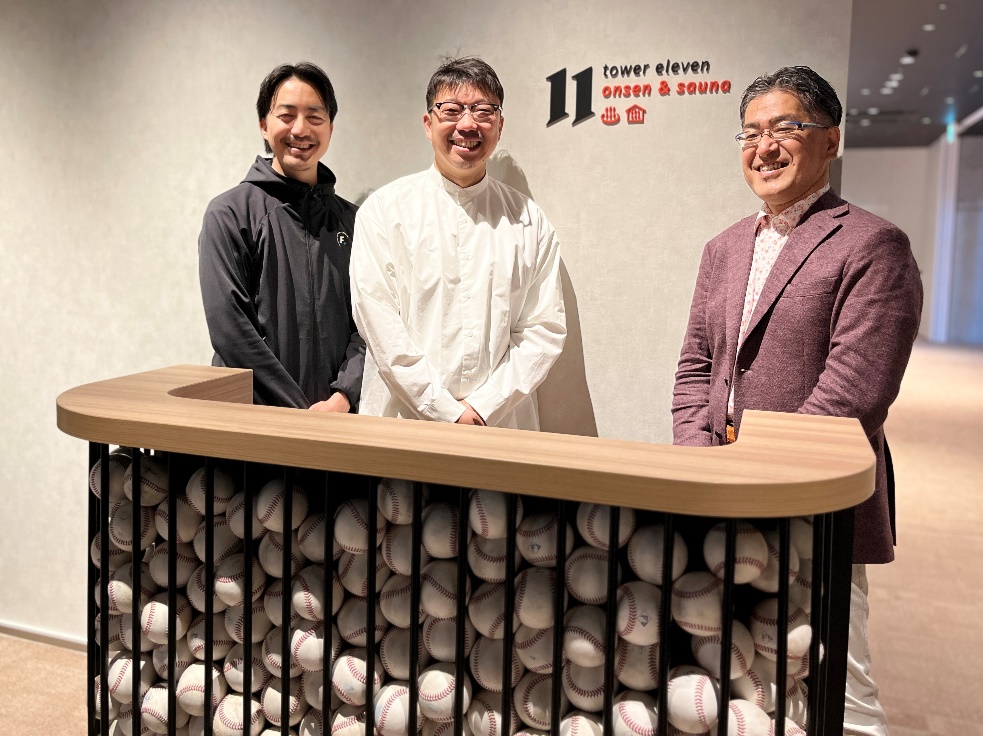- text and edit by
- Yuhi Ito
In this article, under the theme of "Future possibilities for work styles as contemplated by someone born in a shrine or temple," planner Ito, who was born in a temple, looks into the issues surrounding local shrines and temples, such as a lack of successors and the problem of vacant and abandoned temples, from the perspective of "work styles."
Through a discussion between Nakatani, a designer born in a temple who is in a similar situation, and Inoue, a room chief designer who was born in a shrine and works mainly in the hotel market, we considered the possibilities for new "styles of working" in an environment that is becoming increasingly diverse.
【profile】

Hirofumi Inoue
Creative Headquarters First Design Center Design Department 4 Room Chief
Sakakiba Shrine (Misaki Town, Kume District, Okayama Prefecture) / Priest
—
Joined NOMURA Co., Ltd. Ltd. in 2007
2017: Transferred to Chubu branch under the junior rotation system (for 2 years)
2018: Enrolled in the Department of Shinto Studies at Kogakkan University
2019: Completed the above program and returned to work NOMURA Co., Ltd.
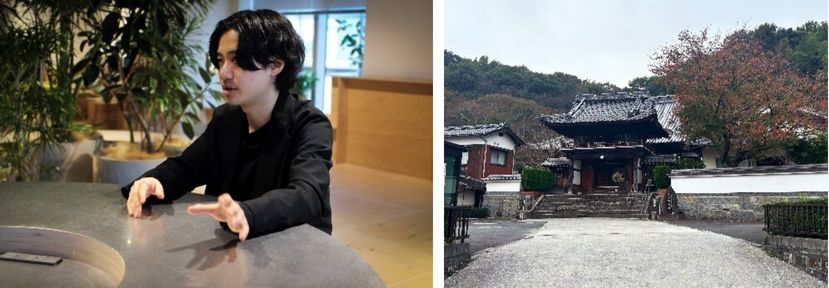
Yuikazu Nakatani
Creative Headquarters Creative Production Center No.10
Chief priest of Nakataniyama Saikoji Temple (Iwakuni City, Yamaguchi Prefecture)
—
Joined NOMURA Co., Ltd. Ltd. in 2023
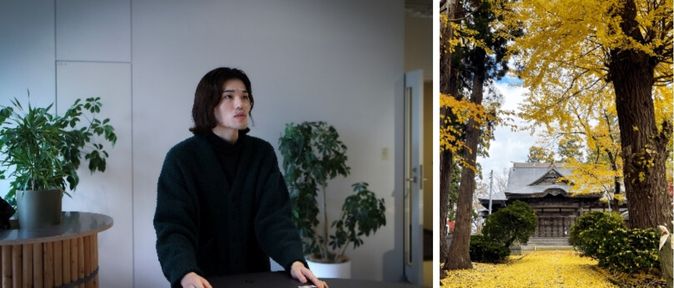
Yuhi Ito
nomlog Editorial Department / Creative Headquarters Planning and Production Center Planning Department 2
Tokozan Nanyoin (Daisen City, Akita Prefecture)
—
Joined NOMURA Co., Ltd. Ltd. in 2023
Planning and writing: Yuhi Ito (nomlog editorial department)
Photo: Nagomi Yagi (nomlog Editorial Department)
*This article is based on the content of a dialogue conducted in November 2024.
What is the difference between a shrine and a temple?
Ito
Before we get into the main topic, I would like to ask, what is the difference between a shrine and a temple?
When I introduce myself and say, "My family home is a temple," I'm always asked, "What's the difference between a shrine and a temple?" But surprisingly, there isn't really any obvious difference...
How would you explain that at a time like that?
Inoue
No, it's difficult.
Although I have qualified as a Shinto priest, I find it a little difficult to explain in one sentence what is different about it.
Nakatani
That's right.
I often explain that the one with a torii gate is a shrine and the one without is a temple, but in reality, temples also have torii gates.
Ito
The following elements are often said to be the differences, but in some cases, like the torii gates, there are elements that they both have in common, so it can be difficult to tell the difference.

Inoue
There was a time when religions were integrated, so temples with torii gates may have been built during that period. This is a feature often seen in temples that were built as annex to shrines, such as Jinguji temples.
Nakatani
This is a remnant of Shinto-Buddhist syncretism.
Personally, I have the impression that when religions are mixed together, internal conflicts often arise, but in Japan, we don't hear many stories of that sort.
Inoue
This is just my personal speculation, but Shintoism may be one factor.
The Shinto way of thinking originates from a sense of reverence for things that are beyond human control, and Shinto is an extension of the Japanese sensibilities that are rooted in everyday life, such as "I'm grateful that we've harvested a lot of rice" and "I hope we'll have a lot of rice next year as well."
In other words, it may be better to think of it not as a religious teaching, but rather as a custom rooted in everyday life.
Because Shinto has this way of thinking, when Buddhism was introduced from the continent during the Asuka period, it seems to have been viewed very positively, with people saying that "the easy-to-understand concept of Buddhism had entered our daily lives."
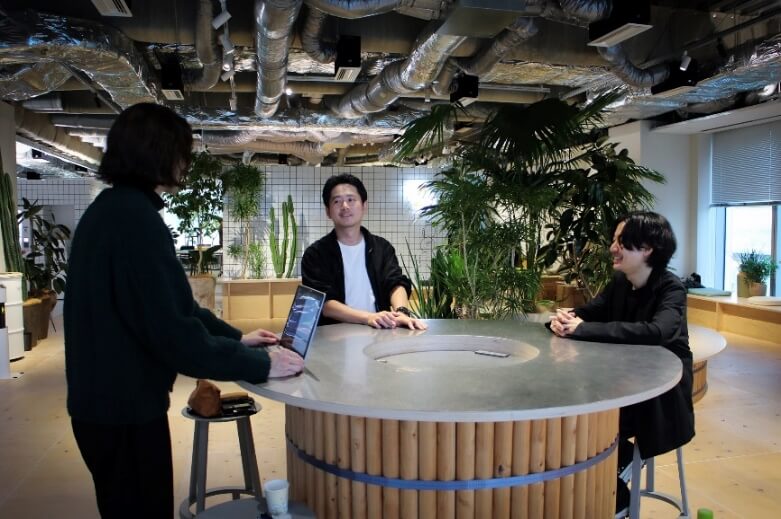
Ito
The peak season is a little different too.
In Buddhism, Obon, the end of the year, and the equinox are busy times, but is the New Year the busiest time for Shintoism?
Inoue
For Shinto, autumn is the busiest season.
Shinto places the utmost importance on rice, and you could even say that it is a faith in rice cultivation.
Autumn, when rice is harvested, is a time when there are many events, especially autumn festivals such as the Niiname-sai and Reitaisai.
Nakatani
By the way, my family are Jodo Shinshu Buddhists, and in Jodo Shinshu they hold a big event called Hoonko around November 28th, which is said to be the death anniversary of the sect's founder, Saint Shinran.
*The dates of the Hoonko may vary depending on the sect within the Jodo Shinshu sect.
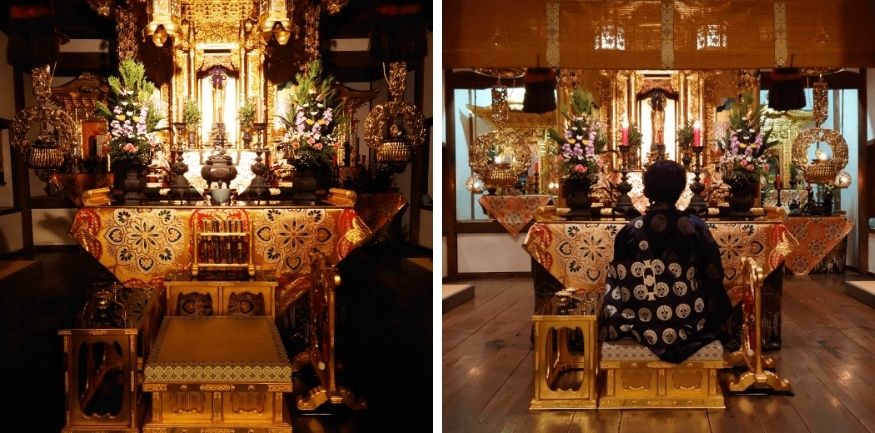 *The Hoonko lecture at Saikoji Temple (Nakatani)
*The Hoonko lecture at Saikoji Temple (Nakatani)
Ito
I think this is true for both shrines and temples, but it must be difficult to have to go back home and help with the family business during busy seasons.
Inoue
Yes, I also go back home and serve on my days off from work about two or three times a year.
We have service and work to do during the New Year holidays, so we'll never be able to take time off during those holidays...
Ito
That's right (laughs). Last year too, I rang the bell 108 times on New Year's Eve.
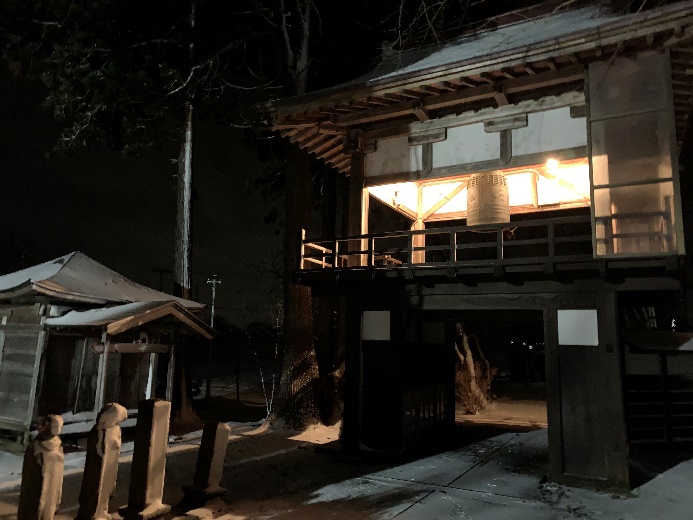 * The gate of Nanyo-in Temple. The bell is rung here on New Year's Eve (Ito)
* The gate of Nanyo-in Temple. The bell is rung here on New Year's Eve (Ito)
Career and qualifications
Ito
Next, may I ask about Room Chief Inoue's background?
Inoue
To briefly explain my career history, I joined NOMURA Co., Ltd. in 2007 and worked at the Tokyo headquarters for about 10 years. After that, I took advantage of the junior rotation system that was in place at the time and was transferred to the Chubu branch for a limited period of time.
*Junior Rotation System: A system aimed at improving the level of designers by rotating them between the head office and branch offices. Designers can be transferred to a branch office for a limited period of 2 to 3 years.
I worked there for about two years, and when my term ended I was due to return to the head office, so I decided it was a good time to end my work life and go to university to obtain a license to become a Shinto priest.
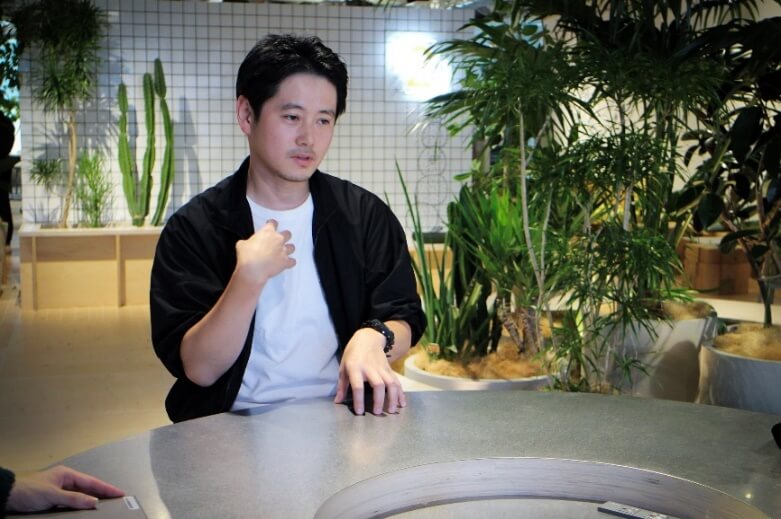
Inoue
While working at NOMURA Co., Ltd., I studied for the entrance exams and was successfully accepted into Kokugakuin University's specialist department (course for working adults).
It's basically a four-year university, but if you have finished the basic subjects at university, the period of study is only one year, so I attended there for about a year.
Ito
Was there anything you gained from building a career as a spatial designer before pursuing qualifications?
Inoue
This may be limited to Shinto, but at university there is something like a group system, and during the period of obtaining qualifications we always lived together with group members, and I gained a lot from that.
Nakatani
Oh, this system also exists in Buddhism.
Because I'm always with my group members, I have many opportunities to talk about my background and my way of thinking. And it's fun.
Inoue
I agree.
My group included people of a wide range of ages, from young people who had enrolled straight out of high school to seniors who had enrolled after retiring.
Since I was right in the middle of the age range, I was the leader of a group of about 20 people, something like a class representative.
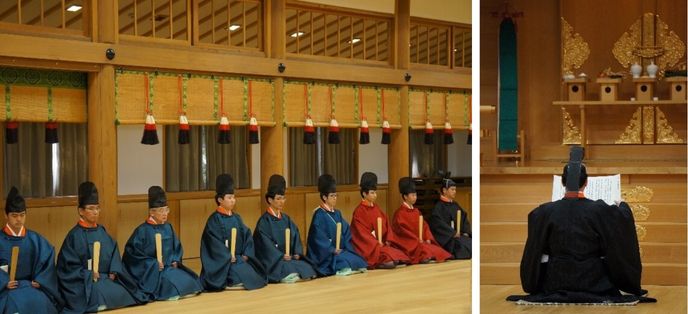 *The graduation ceremony (Inoue)
*The graduation ceremony (Inoue)
I believe that it was because of my 10 years of experience as a designer and my position as a group leader that I was able to receive positive influence from my group members through our communal living, and also to have a positive influence from my side.
Looking at shrines from the perspective of spatial design
Ito
I also heard that you used your career as a spatial designer to teach classes while you were a student.
Inoue
Yes, I used my experience to teach a class while I was a student at Kokugakuin University on the theme of "Finding spatial appeal in shrine grounds from a design perspective."
Nakatani
Shrines are full of spatial charm.
Inoue
Yes, there are so many things to mention: symmetry, the territoriality of the temple grounds, the sense of depth, sequence, etc.
I thought that if priests knew about the spatial appeal of the shrine where they work, they would be able to better convey the appeal of the shrine to visitors, so I started offering classes with the idea that it would be good for priests to have skills in space and design.
 *Class at the Kokugakuin University (Inoue)
*Class at the Kokugakuin University (Inoue)
Ito
What kind of assignments were given in the class?
Inoue
The theme was "Redesigning a Festival," and rather than a typical Shichi-Go-San festival, we gave the children the task of thinking about "what kind of spatial experience would make them want to come to the Shichi-Go-San festival."
Nakatani
So is it an important issue for shrines to attract more visitors?
Inoue
Yes, I think it is necessary to create new value while adhering to tradition.
The number of parishioners (called temple parishioners in Buddhism) has been decreasing recently, especially in rural shrines, so it has become difficult to live on income from the family business alone.
In fact, my father works part-time at an architectural firm.
There is a possibility that I may end up working in the same way in the future, so I am conscious of promoting the appeal of my family business now with an eye to the future.
Recently, we created the website for Sakakiba Shrine, where the Inoue family has served as chief priests for generations.
 *Sakakiba Shrine website. In addition to the history of the shrine, it also contains footage filmed by Inoue (Inoue)
*Sakakiba Shrine website. In addition to the history of the shrine, it also contains footage filmed by Inoue (Inoue)
Nakatani
Wait, did you shoot and edit this footage yourself? Not outsourced?
Inoue
Yes, I took the photo myself (laughs).
My skills as a designer can be put to good use in areas like this, so I don't think it would be a loss for me if I were to take over the family business in the future.
Does being born into a shrine or temple help your design?
Nakatani
Have you ever felt that your upbringing, having been born into a shrine, has been specifically utilized in your designs?
Inoue
Hmm, no…!
Nakatani
Isn't there one? (laughs)
Inoue
To be precise, it doesn't work as a design, but I think it works as an idea.
Nakatani
Is that part of the concept making?
Inoue
I agree.
After obtaining my license as a Shinto priest, I was involved in planning Hoshino Resorts' hot spring inn "Kai Izumo," and I think the experience I gained there came in handy.
Inoue
The Izumo region was famous for its iron production, and tatara ironworks were an important industry there.
We created artwork to convey this story at KAI Izumo.
In making this, we focused on "noro," a type of steel containing impurities that is produced during the smelting of "tamahagane," the raw material used in making Japanese swords.
Noro is often thrown away because it is of low purity and unusable, but in the artwork, Noro is scattered in a circle together with tamahagane, likening it to the setting sun, which is also a feature of Izumo mythology.
 * Tamahagane and Noro artwork at the entrance of "Kai Izumo"
* Tamahagane and Noro artwork at the entrance of "Kai Izumo"
Inoue
The message I wanted to convey with this artwork is that "when making tamahagane, people selfishly throw away this much slag. This too is part of human activities."
And behind this message is the Shinto idea that "gods reside in everything around us, and therefore it is important to have gratitude and reverence for them."
Nakatani
I see, the message conveyed in the artwork reflects Shintoism.
Inoue
Yes, and we provide input on the design ideas we have put into this artwork and other things to all the inn operators so that they can speak about them when showing guests around.
Ito
To all operators?
Inoue
Yes. We give input to all our operators so that each one can speak about the space and its story in their own words.
This satisfies the intellectual curiosity of guests and greatly increases their satisfaction.
We hope that even those whose sole purpose was to visit famous sites such as Izumo Taisha Shrine will have their plans changed in a positive way, perhaps by taking a tour of a workshop that handles tamahagane, or attending a tamahagane event the day after their stay.
Nakatani
I have never experienced this type of accommodation before, but it sounds like a lot of fun, like visiting a museum.
Inoue
thank you.
After all, if you only focus on the superficial aspects, it will be difficult to differentiate yourself from others and guest satisfaction will not increase.
I feel that simply saying "please understand" is a bit harsh in terms of spatial design, and that the product includes the idea of "making an effort to communicate."
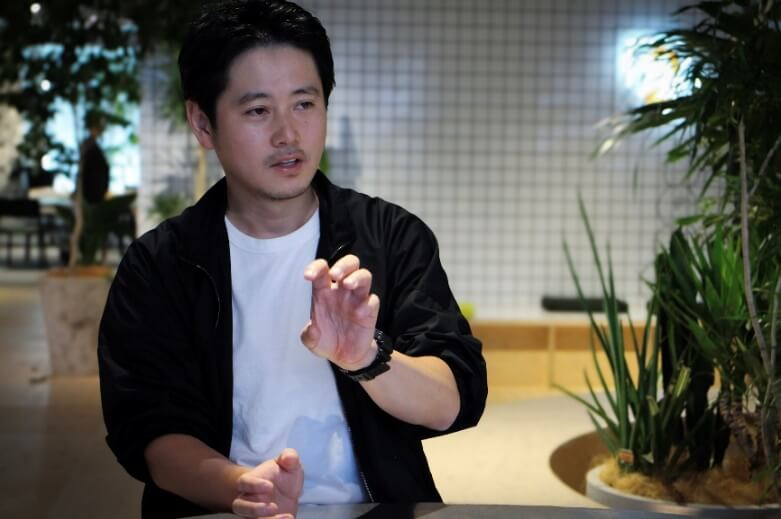
Ito
I heard that KAI Izumo recently won a silver award at the Sky Design Awards 2024 in Hong Kong. Was the concept-making aspect of the design recognized there as well?
Inoue
That's right. International awards not only emphasize design, but also the background, story and concept behind the design. So I think one of the points that was appreciated was the artwork that captured the background of the material.
I believe I was able to effectively demonstrate here the ability to thoroughly understand the origins of all things, which I had honed through my studies of Shintoism.
Inoue
Of course, having a family business as our backbone allows us to be involved in work related to the family business. However, it goes beyond that direct level; I think the knowledge honed by having a family business adds depth to the output at NOMURA Co., Ltd.. I think having a family business as our backbone is very unique in terms of the knowledge we bring back to the company.
 *Interior view of "Kai Izumo"
*Interior view of "Kai Izumo"
Important points in reusing temple and shrine spaces
Nakatani
Currently, there are approximately 77,000 temples across the country, of which about 20%, or 17,000, are said to be temples without a chief priest (vacant temples or abandoned temples).
In the midst of this, we see many vacant and abandoned temples being utilized as accommodation facilities, cafes, and cram schools, taking advantage of their spatial appeal. What do you think is important in making good use of the potential of temple and shrine spaces?
Inoue
I think the current situation is that there are many shrines and temples across the country that have no successors and no capital, but are still being protected.
When it comes to reusing the building, I think it will be difficult to turn it into a business just by rebuilding the building, unless it is on a large scale and there is sufficient capital.
Nakatani
In the first place, it is difficult for shrines and temples that are on the verge of collapse to invest large amounts of capital in reconstruction.
Inoue
Yes, that is why it is necessary to create different values there, and one way to do that is to rebuild the community itself.
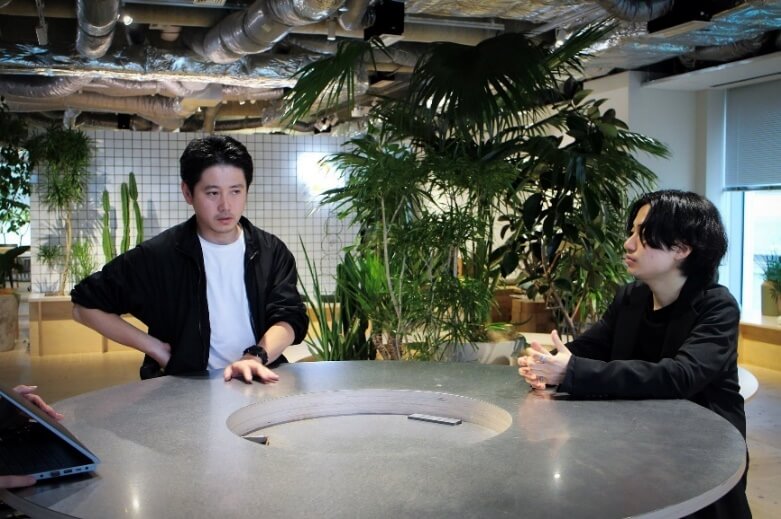
Inoue
I think the key to revitalizing a town or region is to get involved in the area and maintain connections.
In particular, if we are to approach the reuse of temple and shrine spaces, which have strong ties to local communities, from the perspective of rebuilding the community, I think it will become necessary for people to own a home in the area and work and live there.
Nakatani
Owning a home…building a home instead of renting…?
Inoue
Yes, by building a house it seems to show your intention to move there with your family and say, "I'm coming to this area with that level of determination."
It seems that this is actually being put into practice by people who are building communities in rural areas, and I personally think it's a wonderful initiative.
On the other hand, when it comes to community building, although we are good at promoting the value of the community from faraway places such as Tokyo, when it comes to actually getting involved in the local community, we can sometimes be slow to act.
I believe our company has the capacity to accommodate such work styles, so I think that if this type of work becomes possible in the future, the scope of work will expand.
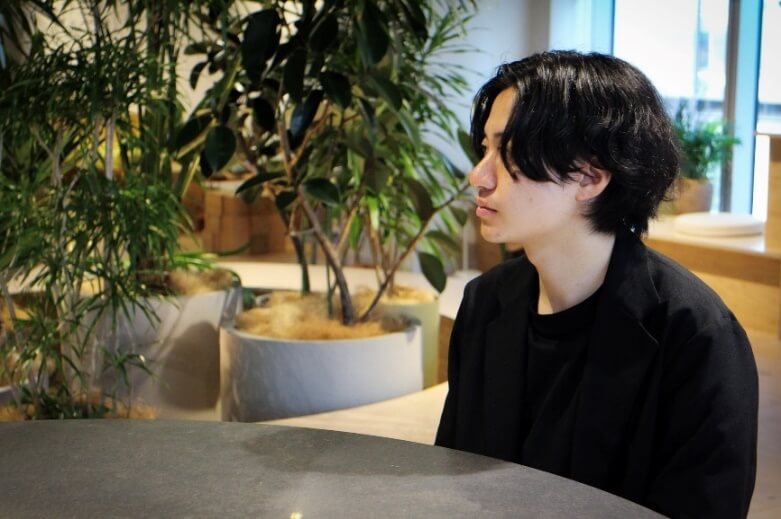
Related article: Creating a place that brings people together and brings vitality to the local community
What do people born in shrines and temples expect from the future of work?
Ito
Finally, what kind of working style do you think would be good in the future?
Inoue
I think it would be good to have a system that allows you to work anywhere in Japan while remaining affiliated with a company.
I believe that if such a system were established, it would make it easier for people who want to work while staying in their hometown for various reasons, including not only family business but also child-rearing and elderly care.
Ito
Indeed, if such a system were to be established, it would enable us to successfully penetrate areas that have strong ties to the local community, such as the reuse of shrine and temple space.
Inoue
Yes, people who want to work while staying in their hometowns may be able to increase their connections and explore new areas of work by living in their hometowns and becoming immersed in the local community.
I believe this is a new role that can only be taken on by living and working locally.
If this way of thinking becomes more widespread and companies become more tolerant of the workplace and the circumstances of each individual employee, I believe it will lead to a better way of working for both us who work at the company and the company itself.

Ito
What about you, Nakatani-san?
Nakatani
I am currently in my second year at the company, and I generally work under my seniors and superiors, so I can't really imagine working alone in my hometown. However, I think it would be very interesting to work in a place where the focus of my workplace is on my local area.
Working from home is now an option, and while we are able to work using laptops, I heard that just five years ago it was normal for employees to come into the office and work on desktop PCs.
I believe this kind of change in work style is happening at many other companies besides ours. If our work style has changed this much in the few years since the COVID-19 pandemic, then maybe in a few years we'll be able to work for a company based in our hometown.
I am very excited to see changes in the way we work in the future.

Ito
Through this discussion, I felt that not only those of us who are in the special situation of having been born into shrines and temples, but all working people expect a way of working that suits them.
And now, as working styles are rapidly diversifying, I believe this is an opportunity to realize better working styles for both employees and companies, where each individual can find a working style that suits them, which will ultimately benefit the company.
I would like to continue to follow the changes in working styles and think about the working styles that are possible at each stage.
Thank you both for today.
Like this article?

